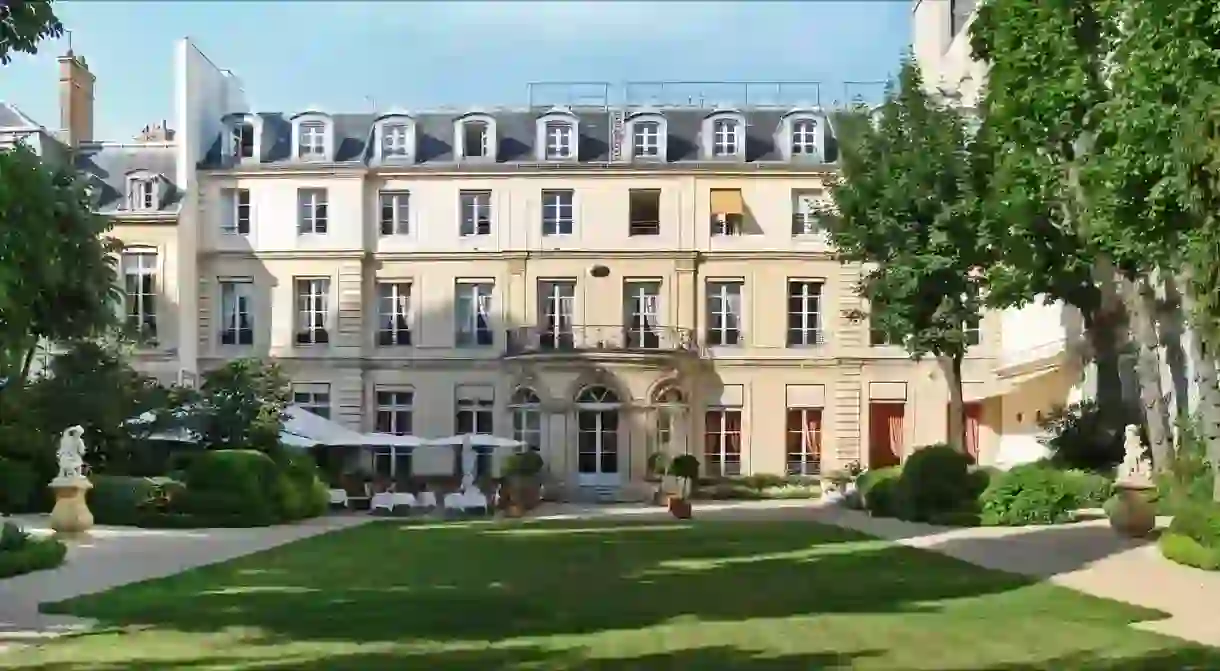A Brief History of the Faubourg Saint-Germain in Paris

In Honoré de Balzac’s Paris of 1833, the limits of the Faubourg Saint-Germain were immaterial. Those who’d never stepped foot in this corner of the 7th arrondissement might still belong to the world of opulence with which its name was synonymous. In our time, the address continues to be a statement of its possessors’ material wealth, though they’re less likely to be so lax about the neighborhood’s demarcation.
Up until the 1600s, this modest parcel of Parisian real estate, bound by the Seine, the Esplanade and Boulevard des Invalides, the Rue de Babylone, Boulevard Raspail, and the Rue du Bac, was open countryside, part of the estate of Margaret of Valois, wife of Henry IV. Following her death in 1615, the land was sold off. By 1660, the quayside was lined with mansions called hôtels particuliers.
The neighborhood’s western edge was delimited in 1670 when Louis XIV unveiled Libéral Bruant’s plans for Les Invalides, a military hospital and retirement home. Aside from the grand chapel, the complex was finished in 1676. Jules Hardouin Mansart then took over and his golden-domed masterpiece was completed 30 years later. With its construction and that of the Pont Royal between 1685 and 1689, the area became more attractive and accessible.

When Louis XIV died in 1715 and the aristocracy returned to the city from Versailles, they found that their old haunts of the Marais, Place Vendôme, and the Faubourg Saint-Honoré had lost their shine, and that they lacked the space for grand new palaces. Thus, the green, spacious Faubourg Saint-Germain became the place to live. Of the 200 or so mansions built, approximately half appeared between 1690 and 1725 and a quarter in the next 25 years.
During the Revolution, many were destroyed or deserted and some were converted into national institutions or embassies. The neighborhood is still home to numerous governmental buildings, including the Prime Minister’s residence, as well as national museums. The bourgeois aristocracy of Napoleon’s decade-long rule between 1804 and 1814, preferred living north of the river in the Faubourg Saint-Honoré.

However, the Bourbon Restoration brought the high nobility back to Paris and restored the Faubourg Saint-Germain to the center of the country’s political life. This lasted until the July Revolution of 1830 when its residents retreated definitively behind the ‘impassive’ walls of their urban castles. In Henry James’ The American (1877), the protagonist Newman considers it ‘a queer way for rich people to live; his ideal of grandeur was a splendid façade diffusing its brilliancy outward too, irradiating hospitality.’
From the late 19th century, wealthy industrialists and leading artists, including numerous expats, joined, or attempted to join, the Faubourg Saint-Germain’s closed-off society. Edith Wharton, herself a resident of the ‘impregnable quarter beyond the Seine’ between 1906 and 1920, described this uneasy evolution in The Custom of the Country (1913).
Today, the majority of the neighborhood’s magnificent townhouses are owned not by France’s residual nobility but by wealthy foreigners, who snap up the €4 million+ properties as holiday homes, the kind that appear in the pages of Architectural Digest, and shop along the Boulevard Saint-Germain.













